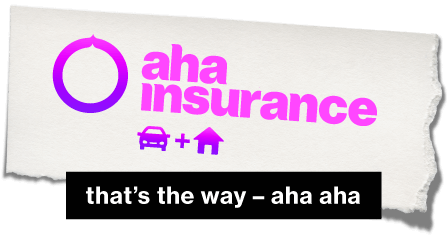Car insurance London, ON
Part of a series on car insurance rates in Ontario.

Car Insurance London FAQs
What does aha insurance’s car insurance cover in London?
In London, Ontario, car insurance typically covers the following:
Third-party liability coverage
This is mandatory coverage in Ontario and is designed to protect you if you are found to be at fault for an accident that results in bodily injury or property damage to someone else. This coverage will cover any damages and injuries up to your policy’s limit. In Ontario, the minimum amount of third-party liability coverage required by law is $200,000.
Accident benefits coverage
This coverage is also mandatory in Ontario and provides benefits to you and your passengers in the event of an accident, regardless of who is at fault. This includes coverage for medical and rehabilitation expenses, income replacement benefits, and caregiver benefits. The amount of coverage available depends on the specific policy you have.
Direct compensation property damage (DCPD) coverage
This coverage is designed to cover the cost of repairing or replacing your car or its contents if they are damaged in an accident where you are not at fault. This coverage is mandatory in Ontario if you are involved in an accident with another driver who is also insured.
Uninsured and underinsured motorist coverage
This coverage protects you in the event that you are in an accident with a driver who is uninsured or does not have enough insurance to cover the damages they caused. This coverage is mandatory in Ontario and can also include hit-and-run collisions, where the other driver flees the scene and cannot be identified.
Comprehensive coverage
This coverage protects damages to your vehicle caused by non-collision events such as theft, fire, vandalism, or weather-related damage. This coverage is optional in Ontario but is recommended if you have a newer or more expensive vehicle.
Collision coverage
This coverage protects damages to your vehicle caused by a collision with another vehicle or object. This coverage is optional in Ontario but is recommended if you have a newer or more expensive vehicle.
Your car insurance policy’s specific coverage and limits in London, Ontario, may vary depending on your individual needs and the insurance company you choose. That’s why reviewing your policy and understanding your coverage before an accident occurs is important.
How can I save on car insurance in London?
There are several ways to save on car insurance in London, Ontario. Here are some tips:
● Shop around: It’s always a good idea to get quotes from multiple insurance providers to compare prices and coverage. Insurance premiums vary significantly between companies, so shopping around can help you find a better deal.
● Increase your deductible: A deductible is the amount you pay out of pocket before your insurance kicks in. By increasing your deductible, you can lower your monthly premiums. Make sure you have enough money to cover the higher deductible if you need to file a claim.
● Bundle your insurance policies: Many insurance companies offer discounts if you bundle your car insurance with other policies, such as home or life insurance. Bundling can save you money on all of your insurance policies.
● Maintain a good driving record: Insurance companies often offer lower rates to drivers with a clean driving record. So, drive safely, obey traffic laws, and avoid accidents or traffic violations.
● Take advantage of discounts: Many insurance providers offer discounts for things like having a good driving record, being a student, having anti-theft devices installed in your car, or taking a registered driver’s education course (for new drivers). Ask your insurance provider what discounts are available to you and take advantage of them.
● Consider the type of car you drive: Some cars are more expensive to insure than others. Before buying a car, check with your insurance provider to see how much it will cost to insure.
What is the average car insurance cost in London?
The average cost of car insurance in London, Ontario, can vary depending on various factors, such as your driving record, age, gender, type of vehicle, and coverage limits. However, according to recent data from the Insurance Bureau of Canada, the average annual cost of car insurance in Ontario was $1,505 in 2020.
It’s important to note that this is an average, and your actual car insurance premiums could be higher or lower depending on your specific situation. For example, if you have a clean driving record and drive a less expensive vehicle, your premiums may be lower than the average. On the other hand, if you have a poor driving record or drive a more expensive vehicle, your premiums may be higher than the average.
What are the 3 types of car insurance in London?
In London, Ontario, there are several car insurance coverage options available, but the three main types are:
Third-Party Liability Coverage
This mandatory coverage in Ontario covers you if you injure someone or damage their property while driving your vehicle. This coverage is part of a standard car insurance policy, including accident benefits coverage, uninsured motorist coverage, and direct compensation-property damage (DC-PD) coverage. DC-PD coverage pays for property damage to your vehicle in an accident for which you are not at fault.
Collision Coverage
This optional coverage protects you against financial loss in the event of an accident that damages your vehicle, regardless of who is at fault. This coverage helps pay for the repair or replacement of your vehicle up to its actual cash value at the time of the accident. Collision coverage is usually subject to a deductible you must pay out of pocket before the insurance coverage kicks in. It can be a good option for drivers with newer or more valuable vehicles who want to protect their investments.
Comprehensive Coverage
This is also an optional coverage that protects against damage to your vehicle that is not caused by a collision, such as theft, vandalism, or weather-related damage. This coverage helps pay for the repair or replacement of your vehicle up to its actual cash value at the time of the incident. Like collision coverage, comprehensive coverage is usually subject to a deductible that you must pay out of pocket before the insurance coverage kicks in. Comprehensive coverage can be a good option for drivers who want extra vehicle protection beyond what is required by law, particularly for those living in areas with a higher risk of theft or weather-related damage.
What factors affect my London car insurance premiums?
Several factors can affect your car insurance premiums in London, Ontario. Some of the most common factors include:
● Driving Record: Your driving record is one of the most significant factors that can impact your car insurance premiums. If you have a history of accidents, tickets, or other driving violations, you may be considered a higher risk to insure and, as a result, have higher premiums.
● Age and Gender: Young and male drivers are typically considered a higher risk to insure than older and female drivers. This is because young and male drivers are statistically more likely to be involved in accidents.
● Type of Vehicle: Your vehicle’s make, model, and year can also affect your car insurance premiums. Generally, the more expensive and luxurious the vehicle, the more expensive it is to insure.
● Location: Where you live can also affect your car insurance premiums. If you live in an area with a high rate of accidents or theft, your premiums may be higher to compensate for the increased risk.
● Coverage Options: The coverage options you select for your car insurance policy can also affect your premiums. The more coverage you select, the higher your premiums will be.
● Driving Habits: How often you drive, how far you drive, and where you drive can also impact your car insurance premiums. Drivers who spend more time on the road or who drive in high-traffic areas may have higher premiums than drivers who only drive occasionally or in less congested areas.
Who has the cheapest auto insurance in London, Ontario?
It can be challenging to determine which insurance company offers the cheapest auto insurance rates in London, Ontario. Insurance rates can vary based on factors such as your age, driving history, type of vehicle, coverage levels, and who else may drive your
car. Therefore, the insurance company that offers the cheapest rate to someone else may not have the cheapest rate for you.
Moreover, each insurance company has a different formula for calculating car insurance rates for each driver. It is recommended that you obtain and compare quotes and coverage options from multiple insurance providers to find the most affordable auto insurance rates. Ensure that you are comparing the same coverage levels and deductibles to get an accurate comparison.
In addition, some insurance companies offer discounts for safe driving, bundling multiple insurance policies, or completing a defensive driving course. You can speak with a trusted insurance broker or licensed insurance expert to learn about any available discounts that could help reduce your premiums.
Are car insurance quotes free in London?
In London, Ontario, car insurance quotes are generally provided free of charge by most insurance providers. You can easily compare rates and coverage options from different providers by requesting quotes over the phone.
When requesting a quote, it is important to provide accurate information about your driving history, vehicle type, and desired coverage levels. This helps ensure the accuracy of the quote and a clear understanding of what the coverage entails.
Our brokerage was among the pioneers to offer Canadians a fully online quotation process. You can quickly obtain an online quote in just 3 minutes or opt to speak with one of our exceptional insurance brokers over the phone.
Fast facts about auto insurance in London
Average annual car insurance rate
Regular drivers in the city
Collisions per year (approximately)
%
Collision rate for the city
Average age
Average household income
%
Unemployment rate
Population
Understanding car insurance in London, Ontario
London is the biggest city in Ontario west of the GTA. People moving there from Eastern Ontario might think it feels small, since its population is considerably smaller than some burroughs in the GTA, but it has a self-contained ecosystem that provides most people with everything it needs.
Unfortunately for those driving to work, London has experienced considerable suburban sprawl. Roads that used to accommodate traffic running east-west across the city become congested quite often, including Oxford (despite being a main thoroughfare).
London has a fair number of accidents, which put the average car insurance rate at the upper-middle end of the spectrum for Ontario. According to London’s Crime Map, most collisions occur downtown and east of Adelaide Street.
Burglary of cars far outweighs actual car thefts, and they happen most frequently in:
- Downtown
- Neighbourhoods along Dundas Street
- Oxford and Second Street
- Wonderland and Beaverbook
Get your bundle on & save!
Want even cheaper insurance? Save up to 50% on home and up to 15% on car insurance when you bundle them.

Get your bundle on & save!
Want even cheaper insurance? Save up to 50% on home and up to 15% on car insurance when you bundle them.

Busting myths about driving and insurance in London
Myth: Accidents are more frequent around Western and Fanshawe.
This isn’t the case according to the Community Crime Map. While you might expect to see a higher number of collisions correlating to higher traffic around Western University and Fanshawe College, the highest density for accidents actually happen downtown, the intersection at Sarnia and Wonderland, Fanshaw and Richmond (“Calamity Corners”), and around Vioctoria Hospital (Commissioners and Wellington).
Myth: Traffic and road maintenance are awful in London.
Traffic isn’t inherently bad in most of London, but it does get congested at some major intersections, including Oxford and Richmond, Wellington Road and Commissioners, and the intersection at Wharncliffe and Horton.
Otherwise, the city’s traffic runs reasonably well. Wonderland Road runs pretty smoothly as a main artery for the city, and traffic surrounding Western’s campus only gets clogged for short peak periods.
Myth: East of Adelaide (“EOA”) isn’t safe to live in.
This is one of London’s biggest myths. When locals refer to “EOA” they’re really talking about a generally small part of town between Adelaide Street and Quebect Street. Most of it has improved greatly in the last 15-20 years, and it has new families, immaculate landscaping, and old growth trees to prove it. You’ll actually find many public schools and charming neighbourhoods east of Adelaide.
Myth: Calamity Corners got its name from a high rate of collisions.
This one’s true, as far as anyone can tell. Most people simply know it as the main intersection by Masonville Mall, but it used to be the intersection of Highways 4 and 22. It serves as a major junction both on weekdays and weekends:
- Students need it to get to and from Western’s campus.
- Workers use it to get to and from downtown.
- Everybody uses it to get to Masonville Mall, Silver City (the theater), and restaurants in the area.
How London’s rates compare to other cities in Ontario
- North York: $4,261
- Etobicoke: $4,199
- Brampton: $4,071
- Scarborough: $3,825
- East York: $3,605
- Woodbridge: $3,603
- Richmond Hill: $3,579
- Mississauga: $3,473
- Markham: $3,389
- Niagara Falls: $3,321
- Bowmanville: $3,308
- Peterborough: $3,259
- Pickering: $ 3,245
- Newmarket: $ 3,216
- Hamilton: $3,201
- Brantford: $ 3,158
- Maple: $3,150
- Whitby: $3,087
- Ajax: $3,053
- York: $2,999
- Toronto: $2,983
- Barrie: $2,924
- Thornhill: $2,871
- Waterloo: $2,867
- Caledon: $2,780
- London: $2,765
- Fort Erie: $2,720
- Oakville: $2,720
- Sault Ste Marie: $ 2,713
- Kitchener: $2,705
- Milton: $2,680
- St Catharines: $ 2,550
- Windsor: $2,536
- Woodstock: $2,513
- Innisfil: $2,505
- Burlington: $2,476
- Kingston: $ 2,360
- Cambridge: $2,297
- Oshawa: $2,295
- Guelph: $2,268
- Gloucester: $2,256
- Stoney Creek: $2,222
- Nepean: $2,196
- Ottawa: $2,195
- Sudbury: $2,005
- Kanata: $2,002
- Thunder Bay: $1,973
- Wasaga Beach: $1,958
Quick tips on driving in London
Go around London’s most dangerous intersections where possible.
Aside from the aptly named Calamity Corners, there are a handful of intersections that are too busy for their own good. They are:
- Sarnia Road and Wonderland
- Wellington Road and Commissioners Road East (by Victoria Hospital)
- Entering and exiting side streets intersecting King Street.
Honourable mentions go to the intersections at Huron and Highbury, Hide Park and Oxford Street West, and wherever you’re trying to turn into White Oaks Mall from Wellington Road.
Ask traffic questions directly to the London Police Department.
The London Police Deaprtment’s Traffic Management Unit actively answers questions from Londoners pretty frequently. It’s headed up by Sergeant Sean Harding, and you can see the team answering common questions about London’s traffic right here here.
The 13-officer team specializes in the Highway Traffic Act, so their knowledge goes deeper than the average officer you might ask in person.
Look for downtown street parking around Victoria Park.
People will circle downtown London for half an hour trying to find a spot right on the road in front of The Works or The Early Bird, but that’s not how you want to spend your evening.
Instead you can find parking in the streets surrounding Victoria Park—except on Richmond Row, of course. That’s where taxis collect people and drop them off in front of the many cafes and bars downtown, making parking there a losing proposition.
London’s new downtown project changed traffic patterns.
Locals know that the Galleria didn’t generate foot traffic or inspire boutique shops the way anyone had hoped in the 90s, so the city created its first flex street, called Dundas Place.
You can check out the design of the new-and-improved Dundas Street right here. Just remember that this redesign is meant to facilitate foot traffic, so it might be faster to drive around instead of cutting through it.
Sources for fast facts about London:
- Lexis Nexis Community Crime Map, London, Ontario
- London Free Press, “One of London’s busiest intersections is so choked with traffic, it’s on track to be classified as completely clogged in 10 years”
- Dundas Place official website
Ministry of Transportation Road Safety Report, 2016 - Stats Canada, 2016 Census Profile, London
Source for average insurance rates by city:
- Survey of 2,800 auto insurance policy holders in Ontario

Google Rating: 4.8
Hot Dang! Those are some beautiful words from beautiful people.






























